Any woman who’s undergone breast-reduction surgery—or who is contemplating it—knows the number 1 reason to downsize: to get rid of pain.
Carrying around a pair of big, big boobs can cause back and shoulder pain, shortness of breath, numbness and tingling in the arms and hands. Running, alas, exacerbates all of those problems.
“The most common reason to get breast reduction is back pain,” says Marci A. Goolsby, M.D., primary care sports medicine physician at the Women’s Sports Medicine Center at the Hospital for Special Surgery in New York City, “which is particularly true if you’re doing sports.”
And though sports bras have improved markedly over the past decade or so—hallelujah!—there are still the issues of thick straps digging into shoulders and sweat accumulation causing bloody chafing. Ouch.
And also, not for nothing, there’s the sad truth of how some people can make a big-busted woman feel about running (or any exercise, for that matter).
“Honestly, it was embarrassing to be that well-endowed,” says Bonnie Hancock, 52, of Cleveland, Tennessee, who had reduction 19 years ago. “People—well, men, really—making jokes about, ‘You’re going to give yourself a black eye!’ Har-har.”

Bonnie (far right), her husband, and two kids ran Atlanta’s Peachtree Road Race 10K in 2014.
At 5’8’’, Bonnie wore an ill-fitting 34E bra because “I refused to buy anything bigger.” She ran in two sports bras from which she has permanent indentations in her shoulders. “It was impossible to find tops and bras that fit and offered support,” she says. The numbness her heavy breasts caused in her arms made her think she was having a heart attack. She sought medical advice; breast-reduction surgery was deemed a medical necessity and fortunately was covered by insurance.
To run with her 36F rack, Carrie Seningen, of Manassas, Virginia, who stands just 4’10’’, had to strap on three bras. “I don’t miss those days,” she says. She suffered excruciating back pain.
“I went to physical therapists, I went to a chiropractor, nothing was working,” Carrie says. “Finally, I saw a surgeon, and he said, ‘Oh yeah, we can solve this.’”

More than a decade after her reduction, Carrie runs pain free. And has fun! If that’s what you call doing the Dopey Challenge of 5K, 10K, half and full marathon!
Carrie’s surgery was in 2002. Now a 42-year-old facilities manager, she is grateful to run without pain, but cautions other BAMRS contemplating reduction surgery to respect the process.
Taking a load off your chest is a big deal.
Breast reduction surgery removes excess breast fat, glandular tissue, and skin to achieve a more proportionate size and reduce pain associated with excessively large breasts, which actually has an official term—macromastia.
“It’s a pretty traumatic surgery,” Carrie says. “The post-surgery pain was pretty significant. I was bruised for weeks.”
At the time Carrie’s kids were 1 and 3. “Mommy couldn’t do much,” she says. “I couldn’t lift the kids, or vacuum, or even use the bathroom without my husband’s support. I needed round-the-clock care for about nearly two weeks.” Which is hard when you’ve got a household with toddlers.
It took six weeks for Carrie’s pain to subside. Bonnie, who went down to 34C, started running a little at a time about three months after her surgery.
Every woman’s story will be different.
“Clearance from your surgeon is the number one issue,” says Dr. Goolsby. “You need her to tell you when the tissues are healed enough for you to take on impact sports.”
No, really, you have to wait. “The risk of running before your surgeon has cleared you is opening the wound, opening the incision,” Dr. Goolsby says. “You may look at your incision and think that it is perfectly healed, but there’s a potential for going out too early and damaging the tissues deep inside.”
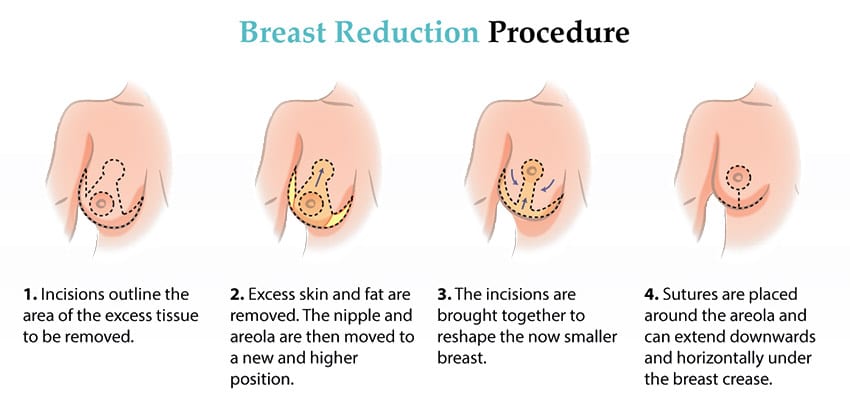
[From New York Center for Facial Plastic and Laser Surgery.]
And this seems kind of obvious, but it bears repeating: You’ll need new sports bras!
“Your DD isn’t going to fit right,” says Dr. Goolsby. “It’s like sending a patient to get a good pair of running shoes. There are different levels of support. You have to try on what feels supportive and comfortable for you. You may want different sports bras for different activities. You have to think about, ‘What’s my current breast size and what is comfortable?’”
Carrie, now a 34C, learned this by trial and error herself. “Even though I had a reduction, I still needed the right bra,” she says. “You have to take care of your breasts after surgery, or they won’t stay looking as pretty. I bought a bra from [low-cost big-box store]. And a friend who is a marathoner said, NO! She took me to get a more-supportive sports bra from a specialty retailer, and I couldn’t believe the difference. It was liberating! Time came off my pace. How crazy is that? A bra can do that!”
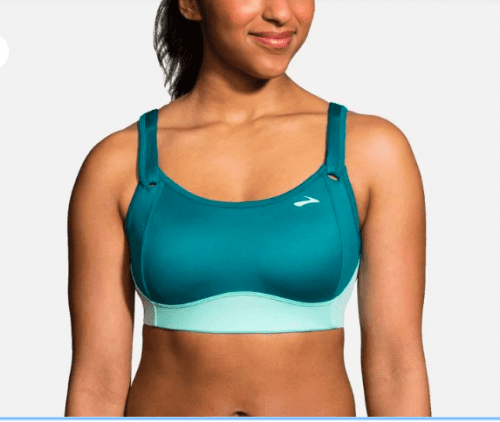
Carrie swears by the Brooks (formerly Moving Comfort) Fiona. But you have to find the best fit for YOU.
Today, Bonnie Hancock, a retired elementary school principal, has created a life around running: She has completed 30 marathons, many half-marathons, and an Ironman triathlon. She’s a member of the 50 States club. She and her husband travel to races. They raised their kids, now 21 and 25, as runners.
“I look at all the friendships and the life we have built. I wouldn’t have stuck with running because it was too painful and uncomfortable,” Bonnie says. “After the surgery, I was so much more comfortable in my own skin, more confident, and no more numbness and pain.”
Was it worth it, Bonnie? “Oh my goodness, YES!”



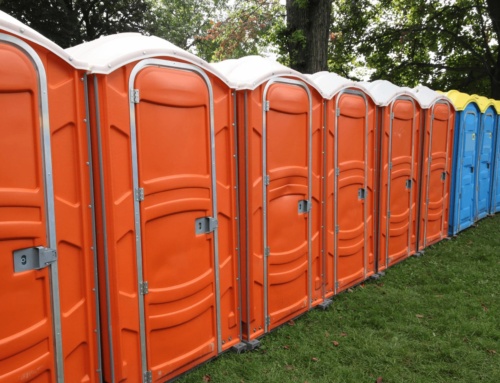
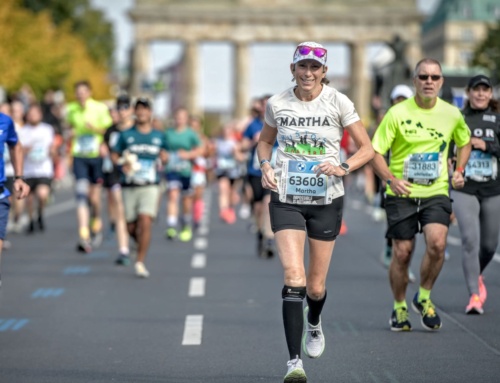
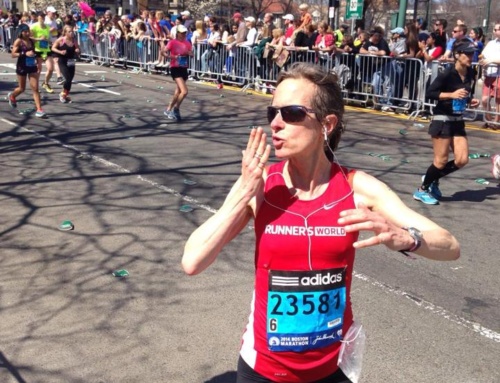
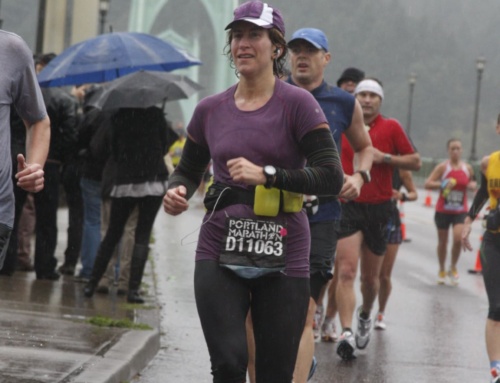
I have not had it- but have contemplated it. However reading about the recovery and the symptoms before surgery has strengthened my resolve to lose weight and strengthen my back before I think about moving forward with this procedure! I wear a Glamorize running bra that can be adjusted for lower impact sports. And yes, I have permanent indentation marks, and yes, I know they do not stay in one place when running. But I want to do everything I can to avoid it at this point…But know that it may still be in my future!
Breast Reduction was the best thing I have ever done for myself. It is a slow recovery and you need to pay attention to what your body says—-the wait may be long to becom active again but worth the wait. Not only did my activities become easier but I sleep better too. I went from an E to a C. It’s been great! But I’d also advise finding the right doctor—I was lucky as I’d found one recommended by a medical assistant who’d had the surgery and he AND his office staff were absolutely amazing!
I was so excited to see today’s post. I wear a size 30GG bra and just visited a plastic surgeon last week to discuss a reduction. I’ve got scars from chafing, indentations from straps, back, and shoulder pain. The thing that finally prompted me to see see the surgeon was my inability to find a supportive bra in my size. Right now, I’m waiting to hear if my insurance will pay for the procedure, but this post makes me even more excited to contemplate the surgery even if it means means or months off from running. You ladies are the best!
I’m was definitely excited to read this article! I’ve contemplated a reduction for years but now seems to be the right time. Going in for a consult in June, hoping the insurance approves it. I can only imagine how much more comfortable running will be when I’m not a 38DDD anymore! Thanks for sharing your stories ladies!
Best thing I ever did, only wish I had done it sooner. Recovry hurt more than I expected, but nothing compared to physical and social discomfort before. Men act as though large breasts mean you are advertising yourself sexually, and for me that was uncomfortable at times. My insurance paid for half, and I feel it was worth the investment. And now I feel like I have ‘normal’ breasts.
I am a loud and proud breast reduction alum! There was no way I could have run before the surgery. Heck, I couldn’t even really breast feed! The only sport I felt moderately able to do was swimming but that meant smooshing everything into a swimsuit so that the bottom wasn’t stupid huge.
The thing I remember most was not being able to wear a bra for 3 months post surgery. It was quite a shock after wearing a bra 24/7 since 4th grade! I was headhunted for a job and they held off on the in-person interview until after surgery. I had to let the headhunter know the situation so my future employer didn’t discard me for 1) not wearing a bra, and 2) wearing an extremely oversized suit jacket. I also remember being SO excited to go buy matching bra and panties!
The only drawback I can think to share is that sometimes my scars get itchy, especially when I sweat. But no question about it, totally better than the huge boobs!
This is my 2nd week after my breast reduction surgery. To be honest I thought it would have been worse but I been managing my pain pretty good, wanted to start doing some stuff at home, my breakfast or lunch and wash some dishes. Until I went to see my surgeon for my follow up appointment, he removed the bandages, few hours after I started feeeling more pain, my right breast wish I had 10 years ago a Lymph removal surgery is like 30% bigger than the left one, Pain is getting worse, I did some laundry today and my blow dry my hair, was not a good idea, at night I had to take my strong pain killer and I am still In pain, Not sure what’s going on. I will be resting this days no crazy no dishes no laundry and see how I feel. If not I will have to call my dr. I am worried that I overdue it, I get depressed when I am resting all day and my house is a mess so i feel the need of doing stuff, is kinda makes me feel good but is causing me more pain. Any way so far the pain is the one that has been bothering me for the last 3 days
Your article is very informative. It’s a welcome change from other supposed informational content. Your points are unique and original in my opinion. I agree with many of your points.
Visit Us: https://www.drzwiebel.com
Susan, mine hurt a lot when the bandages were removed. I went from close to no pain to a 8. I emailed my surgeon right away and she told me to buy gauze to tape down the incision lines. Also I asked her to prescribe me gabpentin for the nerve pain. this will help. good luck!
I live by myself and my family are out of town.. I don’t have car and I bike everywhere… I want to get the surgery but am fearful my recovery will be difficult in my circumstances.
I’m 4 weeks post op and I wish I did this surgery years ago. Had my surgery on Wednesday and went back to work on Monday (working from home). It really isn’t bad at all. I didn’t finish my pain medicine. The hardest part for me was finding a comfortable bras to wear while my incisions healed and swelling went down. I wasn’t use to wearing a bra 24/7 and that’s what you gotta do for the first 2-3 weeks. Also, I’m a belly sleeper and still haven’t been able to sleep on my stomach. Just clean your house really good, fill your freezer, make some meals before surgery and be prepared to just relax.
I had breast reduction surgery 7 weeks ago. I am still in pain, uncomfortable, wear a bra 24/7 and can’t do much of anything except walk. I don’t understand why I keep reading ‘oh I was great in 2 weeks’. I couldn’t drive my truck for 6 weeks. And now they’re telling me no kayaking or mountain biking or snowboarding for 3 months. This is a way bigger surgery than I ever expected.
I had a reduction 9 weeks ago and still in pain and can’t do much. I somehow got 2 infections and came open. My stitches weren’t dissolving. I am finally healed from that but still sore. I was a 34f before and I don’t know what I am now. I glad I did it my neck is better and some of my back. I just want to feel regular again. If anyone has suggestions to help me not be in so much pain.